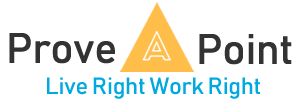When agile first appeared, one of the key advantages that proponents touted was the reduced structure—the focus on doing work instead of documenting work. That’s fair enough, but agile still has a fairly well-established structure. There is a regular cadence of work delivery, defined roles that people take on and expected ways for those roles to interact with one another.
There are also ways to measure agile performance and to compare that performance across teams because the same measures apply to all those teams. So agile isn’t quite the escape from structure that proponents would like us to believe.
That’s not intended to be a criticism of agile; if it weren’t that way, it would be much harder for organizations to adopt the concepts. The reason why agile has been able to grow so quickly (beyond its effectiveness) is the fact that it is a fairly simple structure that can be grasped quickly and where teams share a similar experience. They can therefore learn from one another’s problems, leverage their best practices and avoid making the same mistakes. However, now hybrid is coming to the fore as a project delivery approach, and that’s a bit different.
For most organizations, hybrid allows for the combination of elements of waterfall and agile, but not in a consistent way. Effective hybrid delivery empowers project managers to …
Please log in or sign up below to read the rest of the article.
ADVERTISEMENT
Published at Mon, 17 Sep 2018 04:00:00 +0000




